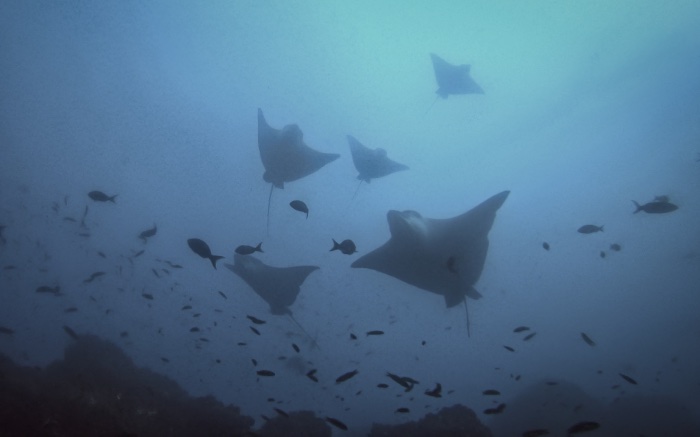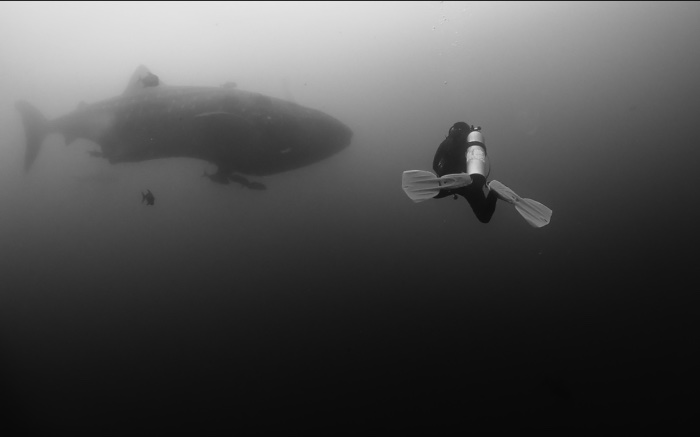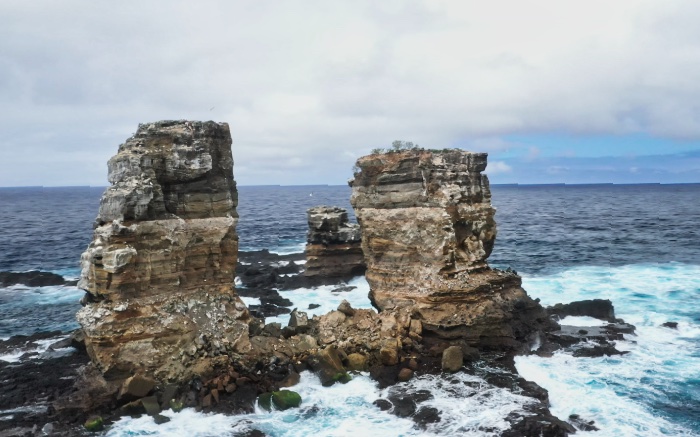Seahawk arrived to Darwin in July 2021, the northernmost island in the Galapagos archipelago, after previously cruising the southern parts of the province and formally launching YachtAid Global’s Swimming and Sailing program in San Cristobal.
Much excitement could be felt on the boat as the inaugural science mission was about to begin. In a joint effort led by YachtAid Global, Seahawk became an active participant in Operation Swimway; a project dedicated to lending support to science and marine conservation NGOs conducting state-of-the-art research around the world.
Operation Swimway’s focus is to determine patterns of migratory animals, such as sharks, mantas, and turtles. Understanding the movements of these animals and the corridors they use to feed and breed is key for protecting all marine life, especially so for sharks who have to take increasingly dangerous journeys due to unsustainable fishing practices and other hazards including water pollution. High on the list of Operation Swimway’s priorities is to precisely define endangered species migratory patterns. The data collected and analyzed is then used to help define candidate Marine Protected Areas (MPAs) with the goal of seeking and obtaining approval from the responsible governing agencies.

While visiting Darwin, Seahawk was joined by scientists from the conservation group Migramar, a well-known organization that operates in the Eastern Pacific Ocean dedicated to studying the movement of threatened marine species. Dr. Alex Hearn led the effort on this expedition, which focused on studying whale sharks, known to visit Darwin Island during the July, August, and September timeframe. Adult female whale sharks congregate annually in the Galapagos, a phenomenon that is one of the subjects of Migramar’s research. Most of the females are pregnant when visiting the islands, suggesting the archipelago could serve as a nursery for these sharks. The mission’s objective was to attach GPS tags to individual whale sharks in order to provide tracking data based on a representative sample for determining the overall nature of species’ movements. Very little is known about where the whale sharks go, their pupping grounds, or their feeding habits.
During our cruising of Darwin and Wolf, we were lucky to have several encounters with some of the whale sharks. As stewardess Thea remembers:make
“It was a crazy experience. I suddenly saw this 12-meter fish swimming very fast past us. You could feel the water moving around you as she swam past. The scientists tried to tag her, but failed to do so as she was at full speed. The sighting lasted a few seconds, but it was incredible.”
Some of the attempts at tagging these sharks were successful, but the process is far from perfect. The sheer size, speed, and strength of whale sharks make the attachment of transmitters very challenging.

But not all was focused on GPS tracking. Dr. Diana Alexandra Pazmiño Jaramillo was part of the science team leading Operation Swimway. Her work at the Galapagos Science Center focuses on a more evolutionary approach; research designed to trace the migration patterns of various shark genotypes by using genomics, a special kind of DNA fingerprinting used to identify individual species without actually tagging them. Dr. Diana Alexandra’s work involves analyzing the secretions and tissues of the animals at a molecular level, which is crucial to revealing their behavior and patterns of movement.
Miguel Herrero, Marine Biologist and Project director at Mantas Ecuador, was also on board Seahawk. His research revolves around developing an understanding of both the reproductive processes and migration patterns of giant manta rays. But Miguel is also interested in the role of cleaning stations and the special fishes that symbiotically bond to keep the rays healthy and free of parasites. Like many symbiotic relationships in the ocean, there is much specialization. In the case of the giant mantas, there are only a few specific types of cleaning fish suitable for servicing this shark family species.

During our days at Darwin and Wolf, owners, guests, and crew were fortunate to experience the outstanding marine life that the famous Galapagos islands hold, while also witnessing how research on marine animals is conducted by professional scientists; an inspiring and educational experience.
However, not all was fieldwork. The Seahawk team also attended presentations held by the Migramar scientists, in which they discussed the experimental design needed to further improve the understanding of the mechanisms in play. Much was about how to better track the animals, sharks and mantas, but also important to the cause was developing a comprehensive understanding of the ecosystem; the Galapagos islands in particular are complicated because of the byzantine matrix of converging currents, some very warm, some very cold. It is acknowledged that a more holistic approach to science is likely the right answer in order to secure the outcome desired.
Prototypically, developing MPAs in isolation will not solve the problem unless other environmental hazards are addressed. Migramar and other similar NGOs realize the problem is multifaceted and are working to establish more comprehensive understandings and solutions. As for the Seahawk team, the boat is exceedingly proud to have played a small role in this most important effort.
If you’d like to know more, you can watch the video below. It includes interviews with the Migramar team on board, as well as footage of our days cruising the islands. Not to be missed!

